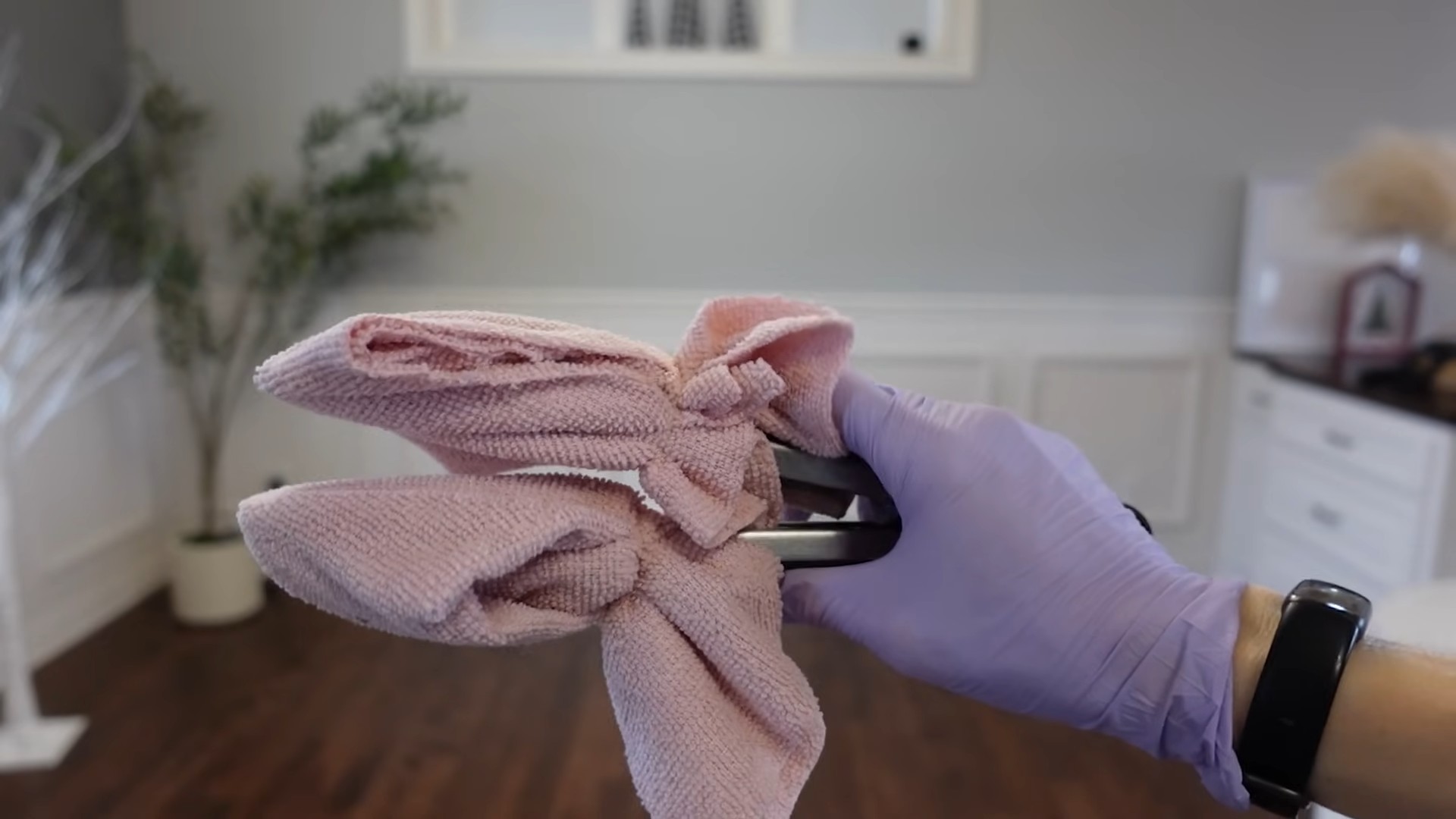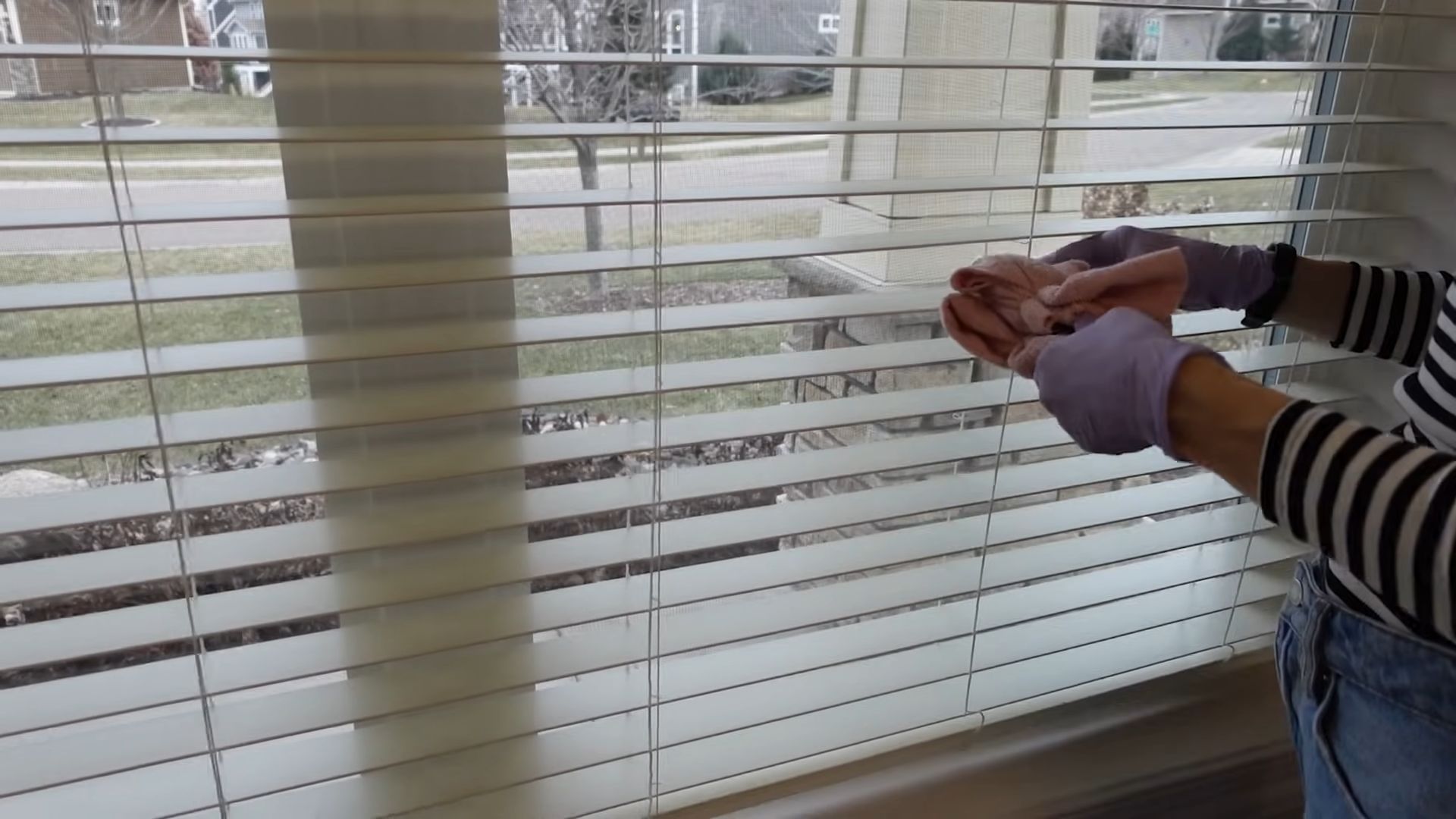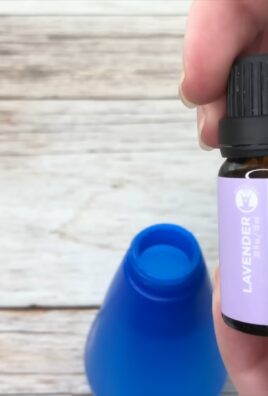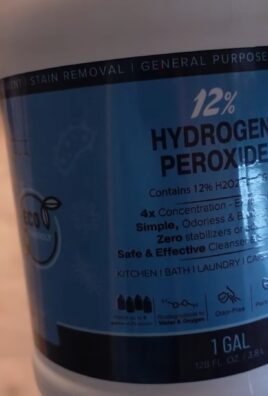Clean blinds easily? Absolutely! Let’s face it, cleaning blinds is one of those chores we all dread. Dust, grime, and who-knows-what-else cling to those slats, making them look dull and dingy. But fear not, fellow home enthusiasts! I’m here to share some game-changing DIY tricks that will make cleaning your blinds a breeze, saving you time and effort.
For centuries, window coverings have played a vital role in homes, offering privacy, light control, and aesthetic appeal. While the materials and designs have evolved, the challenge of keeping them clean has remained constant. Think about it – our grandmothers probably had their own secret methods for dusting shutters or washing lace curtains! Now, we have modern blinds, and I’m here to give you the modern solutions to clean blinds easily.
Why is this DIY so important? Because clean blinds not only look better, but they also contribute to a healthier home environment. Dust and allergens trapped in blinds can trigger allergies and respiratory issues. Plus, let’s be honest, sparkling clean blinds just make a room feel brighter and more inviting. So, ditch the frustration and get ready to discover some simple, effective, and budget-friendly ways to transform your blinds from dusty to dazzling!

DIY Blind Cleaning Hack: Sparkling Clean Blinds in Minutes!
Okay, let’s be honest, cleaning blinds is one of those chores we all dread. It’s fiddly, time-consuming, and never seems to get them truly clean. But fear not! I’ve discovered a super easy and effective DIY hack that will have your blinds sparkling in no time. This method uses common household items and requires minimal effort. Get ready to say goodbye to dusty, grimy blinds and hello to a brighter, cleaner home!
What You’ll Need:
* A clean microfiber cloth (or two!)
* White vinegar
* Warm water
* A spray bottle
* An old sock (yes, really!)
* Rubber bands
* A bowl or bucket
Step-by-Step Instructions:
This hack is broken down into two main phases: preparing your cleaning solution and then actually cleaning the blinds. Let’s dive in!
Preparing Your Cleaning Solution
1. Mix the Cleaning Solution: In your bowl or bucket, combine equal parts white vinegar and warm water. I usually start with about 1 cup of each, but you can adjust the amount depending on how many blinds you need to clean. The vinegar acts as a natural disinfectant and helps to loosen dirt and grime. Don’t worry too much about the vinegar smell; it dissipates quickly.
2. Pour into Spray Bottle: Carefully pour the vinegar and water mixture into your spray bottle. Make sure the bottle is clean to avoid contaminating your solution with any residue.
Cleaning Your Blinds: The Sock Method
This is where the magic happens! The sock method is a game-changer for cleaning blinds quickly and efficiently.
1. Prepare the Sock Tool: Grab your old sock (a clean one, of course!). Slide it over your hand, like you’re making a puppet. Secure the sock to your hand using rubber bands around your wrist. This will keep the sock from slipping off while you’re cleaning.
2. Dampen the Sock: Lightly spray the sock-covered hand with your vinegar and water solution. You want the sock to be damp, not soaking wet. If it’s too wet, it will drip and make a mess.
3. Clean the Blinds (One Slat at a Time): Now, here’s the technique. Gently pinch each blind slat between your thumb and sock-covered fingers. Slide your hand along the length of the slat, effectively wiping away dust and grime. Work from top to bottom, one slat at a time.
4. Rinse and Repeat (If Necessary): If your blinds are particularly dirty, you may need to rinse the sock with clean water and re-spray it with the cleaning solution. You might also want to switch to a clean section of the sock or even use a fresh sock altogether.
5. Dry the Blinds: After cleaning all the slats, use a clean, dry microfiber cloth to wipe down any remaining moisture. This will help prevent water spots and ensure your blinds are sparkling clean.
Alternative Method: Microfiber Cloth and Spray Bottle
If you’re not a fan of the sock method, you can also use a microfiber cloth and spray bottle directly.
1. Spray the Blinds: Lightly spray each slat with your vinegar and water solution. Again, avoid over-saturating the blinds.
2. Wipe with Microfiber Cloth: Use a clean microfiber cloth to wipe each slat, removing dirt and grime. You’ll likely need to fold the cloth and use different sections to avoid spreading the dirt around.
3. Dry the Blinds: As with the sock method, use a clean, dry microfiber cloth to wipe down any remaining moisture.
Tips and Tricks for Sparkling Clean Blinds
* Dust Regularly: To prevent heavy buildup, dust your blinds regularly with a duster or vacuum cleaner with a brush attachment. This will make cleaning much easier in the long run.
* Work in Sections: If you have a lot of blinds to clean, work in sections to avoid feeling overwhelmed. Focus on one room at a time.
* Protect Your Floors: Place a towel or drop cloth under your blinds to protect your floors from drips.
* Test in an Inconspicuous Area: Before cleaning all your blinds, test the cleaning solution in an inconspicuous area to ensure it doesn’t damage the finish.
* For Stubborn Stains: For stubborn stains, you can try using a slightly stronger solution of vinegar and water, or even a small amount of dish soap. Just be sure to rinse thoroughly.
* Consider the Material: This method works well for most types of blinds, including vinyl, aluminum, and faux wood. However, for fabric blinds, you may need to use a different cleaning method, such as vacuuming or spot cleaning.
* Safety First: Always be careful when working at heights. Use a sturdy ladder or step stool and have someone spot you if necessary.
* Deep Cleaning: For a really deep clean, you can remove your blinds and soak them in a bathtub filled with warm water and a mild detergent. Just be sure to rinse them thoroughly and allow them to dry completely before rehanging them.
* Cleaning Cordless Blinds: Cordless blinds can be cleaned using the same methods as regular blinds. Just be extra careful not to damage the lifting mechanism.
* Cleaning Vertical Blinds: Vertical blinds can be cleaned using the same methods as horizontal blinds. However, you may find it easier to clean them while they are hanging.
* Frequency of Cleaning: How often you need to clean your blinds will depend on how dusty your home is and how often you open your windows. As a general rule, you should aim to clean your blinds at least once a month.
* Don’t Forget the Cords: While you’re cleaning the slats, don’t forget to wipe down the cords as well. These can also accumulate dust and grime.
* Make it a Habit: The key to keeping your blinds clean is to make it a habit. Incorporate blind cleaning into your regular cleaning routine, and you’ll never have to deal with heavily soiled blinds again.
* Vinegar Alternatives: If you’re not a fan of the smell of vinegar, you can try using lemon juice or a mild dish soap instead. Just be sure to rinse thoroughly.
* Essential Oils: For a pleasant scent, you can add a few drops of your favorite essential oil to the cleaning solution. Lavender, lemon, and eucalyptus are all great options.
* Check for Mold: If you live in a humid environment, check your blinds regularly for mold. If you find any mold, clean it immediately with a solution of bleach and water.
* Professional Cleaning: If you’re not comfortable cleaning your blinds yourself, you can always hire a professional cleaning service.
Why This Hack Works So Well
The combination of vinegar and warm water is a powerful cleaning agent that effectively loosens dirt and grime without harsh chemicals. The sock method provides excellent surface contact and allows you to clean multiple slats at once, saving you time and effort. The microfiber cloth ensures a streak-free finish.
Enjoy Your Sparkling Clean Blinds!
That’s it! With this simple DIY hack, you can easily clean your blinds and enjoy a brighter, cleaner home. I hope this helps you tackle that dreaded chore with ease. Happy cleaning!

Conclusion
So, there you have it! No more dreading the dusty, grimy blinds that seem to mock your cleaning efforts. This simple, yet incredibly effective DIY blind cleaning trick is a game-changer for anyone who values a clean and bright home without spending hours scrubbing or resorting to harsh chemicals. We’ve shown you how to transform a pair of tongs and microfiber cloths into a powerful cleaning tool that tackles dust, dirt, and grime with ease.
Why is this a must-try? Because it’s efficient, cost-effective, and gentle on your blinds. Forget about expensive cleaning solutions or flimsy disposable wipes. This method allows you to reuse materials, customize your cleaning solution, and reach every nook and cranny of your blinds with precision. The results speak for themselves: sparkling clean blinds that let the sunshine in and instantly brighten up your space.
But the beauty of this DIY approach lies in its adaptability. Feel free to experiment with variations to suit your specific needs and preferences. For instance, if you have stubborn stains, consider adding a few drops of lemon essential oil or white vinegar to your cleaning solution for extra cleaning power. For delicate blinds, use a gentler cleaning solution and apply less pressure while wiping. You can even use different types of microfiber cloths for different levels of cleaning – a thicker cloth for heavy dust and a thinner cloth for polishing.
Don’t be afraid to get creative and personalize this method to make it your own!
This DIY blind cleaning method isn’t just about achieving clean blinds; it’s about simplifying your life and reclaiming your time. It’s about finding joy in the small things and taking pride in a well-maintained home. It’s about empowering yourself to tackle everyday challenges with ingenuity and resourcefulness.
We are confident that once you try this DIY blind cleaning trick, you’ll wonder how you ever lived without it. It’s a simple solution to a common problem, and it delivers exceptional results every time.
So, what are you waiting for? Gather your supplies, follow our easy steps, and prepare to be amazed by the transformation. And most importantly, we want to hear about your experience! Share your tips, tricks, and before-and-after photos in the comments below. Let’s create a community of clean-blind enthusiasts and inspire others to embrace the power of DIY.
Your journey to sparkling clean blinds starts now! We encourage you to try this method and share your results. Let us know what worked best for you and any variations you discovered. Together, we can make cleaning blinds a breeze for everyone!
Frequently Asked Questions (FAQ)
1. What type of blinds does this DIY cleaning trick work best on?
This method is versatile and works well on most types of blinds, including:
* **Venetian blinds:** These are the most common type and benefit greatly from this method, as it allows you to clean each slat individually.
* **Mini blinds:** Similar to Venetian blinds, but with narrower slats. The tong method is perfect for reaching into the tight spaces.
* **Vertical blinds:** While you might need to adjust your technique slightly, this method can still be used to clean vertical blinds. Simply run the tongs along the length of each slat.
* **Faux wood blinds:** These are durable and easy to clean with this method.
* **Aluminum blinds:** Be gentle when cleaning aluminum blinds, as they can be easily bent.
However, it’s always a good idea to test a small, inconspicuous area first, especially if you have delicate or antique blinds. Avoid using this method on fabric blinds, as they may require specialized cleaning.
2. What kind of cleaning solution should I use?
The best cleaning solution depends on the level of dirt and grime on your blinds. Here are a few options:
* **Mild soap and water:** This is a great all-purpose cleaner for lightly soiled blinds. Use a gentle dish soap or castile soap.
* **Vinegar and water:** A mixture of equal parts white vinegar and water is effective for removing grease and grime. Vinegar also has disinfecting properties.
* **Lemon juice and water:** Lemon juice adds a fresh scent and can help to cut through grease.
* **Essential oils:** Adding a few drops of your favorite essential oil (like lavender, tea tree, or eucalyptus) can add a pleasant aroma and provide additional cleaning benefits. Tea tree oil, in particular, has antibacterial properties.
Avoid using harsh chemicals, bleach, or abrasive cleaners, as they can damage your blinds. Always test your cleaning solution on a small, hidden area first to ensure it doesn’t discolor or damage the material.
3. How often should I clean my blinds using this method?
The frequency of cleaning depends on factors such as the location of your blinds, the amount of dust in your home, and whether you have pets. As a general guideline:
* **Lightly soiled blinds:** Clean every 1-2 months.
* **Moderately soiled blinds:** Clean every 2-4 weeks.
* **Heavily soiled blinds:** Clean weekly or as needed.
Regular cleaning will prevent dust and grime from building up, making the cleaning process easier and more effective.
4. Can I use this method to clean blinds that are heavily soiled or stained?
Yes, but you may need to take a few extra steps:
* **Pre-treat stains:** Before using the tong method, pre-treat any stubborn stains with a stain remover or a paste of baking soda and water. Let it sit for a few minutes before wiping.
* **Use a stronger cleaning solution:** Consider using a vinegar and water solution or adding a few drops of dish soap to your cleaning solution.
* **Scrub gently:** Use a soft-bristled brush or an old toothbrush to gently scrub heavily soiled areas.
* **Rinse thoroughly:** After cleaning, rinse the blinds with clean water to remove any residue.
For extremely stubborn stains, you may need to repeat the cleaning process or consider professional blind cleaning services.
5. What if I don’t have tongs? Can I use something else?
While tongs are the ideal tool for this method, you can use other items in a pinch:
* **Spatula:** Wrap microfiber cloths around a spatula and secure them with rubber bands.
* **Paint stir stick:** Similar to the spatula method, wrap cloths around a paint stir stick.
* **Clothespins:** Attach microfiber cloths to clothespins and use them to clean each slat individually.
Keep in mind that these alternatives may not be as effective or efficient as using tongs.
6. How do I prevent my blinds from getting dusty so quickly?
Here are a few tips to help prevent dust buildup on your blinds:
* **Dust regularly:** Use a duster or vacuum cleaner with a brush attachment to dust your blinds regularly.
* **Air purifier:** Use an air purifier to remove dust and allergens from the air.
* **Close windows:** Keep windows closed during dusty periods.
* **Clean regularly:** Regular cleaning will prevent dust and grime from building up.
7. Can I use this method on fabric blinds or shades?
No, this method is not recommended for fabric blinds or shades. Fabric blinds require specialized cleaning methods, such as vacuuming or spot cleaning with a gentle fabric cleaner. Using the tong method on fabric blinds could damage the material.
8. What type of microfiber cloths should I use?
Use high-quality microfiber cloths for the best results. Look for cloths that are soft, absorbent, and lint-free. You can use different types of microfiber cloths for different levels of cleaning – a thicker cloth for heavy dust and a thinner cloth for polishing.
9. Is this method safe for pets and children?
Yes, this method is generally safe for pets and children, as long as you use a non-toxic cleaning solution. Avoid using harsh chemicals or cleaners that could be harmful if ingested. Always keep cleaning solutions out of reach of children and pets.
10. My blinds are still streaky after cleaning. What am I doing wrong?
Streaks can occur if you’re using too much cleaning solution or if you’re not drying the blinds properly. Try using less cleaning solution and wiping the blinds with a dry microfiber cloth after cleaning. You can also try using distilled water in your cleaning solution to prevent mineral buildup.




Leave a Comment